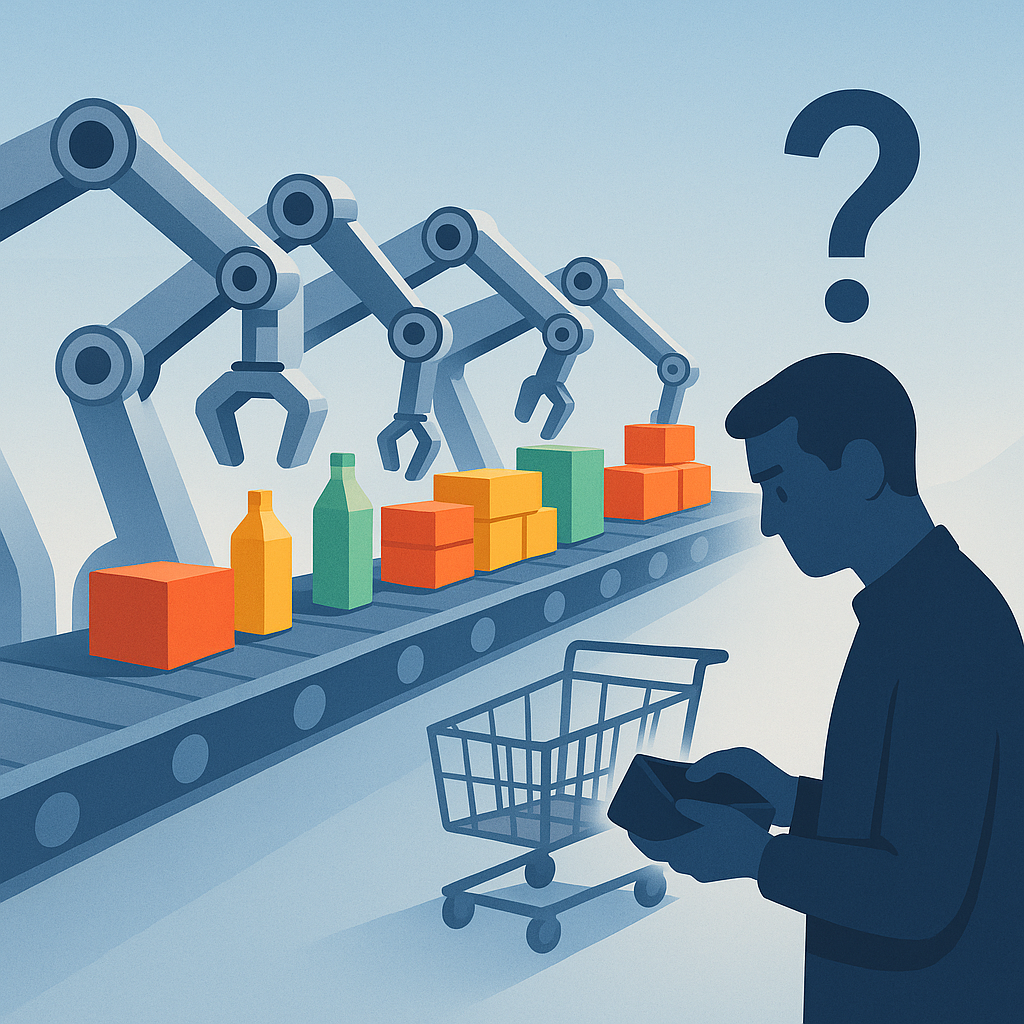Who’s Left to Buy? Baumol, AI, and the Hidden Cost of Progress

GDP may soar on autopilot. Who foots the bill when humans clock out?
A riddle you can feel
Mila is a freelance designer in Lagos. Last year she could pull in three logo gigs a week at fifty dollars a pop. Today her Upwork feed is jammed with posts that read, “Need brand kit. Use Midjourney. Budget: five dollars.” The work is still there, but the pay has vanished.
Multiply Mila by millions of coders, marketers, paralegals, and copywriters. You get a quiet riddle:
If smart machines make almost everything, who is left to buy the stuff?
Baumol’s whisper
In 1966, economist William Baumol noticed that productivity rises at different speeds. A steel mill doubles output every few years, but a live string quartet still needs four musicians for forty minutes to play a Mozart piece. Wages, however, rise in both worlds because musicians will quit if steelworkers are paid more.
That tension is called Baumol’s Cost Disease. Productivity advances in one sector yank wages upward in sectors that cannot automate.
Flip the lens to 2025. Generative AI is squeezing costs in coding, design, legal review, customer support, even parts of healthcare. If software eats that many jobs, we risk the mirror image of Baumol’s disease: soaring supply, sinking wages, and not enough wallets open on the demand side.
McKinsey’s 2025 “Superagency in the Workplace” report pegs the upside of generative AI at up to 3.4 points of annual productivity growth, yet it projects only 14 percent offset in new roles over the same period.
Productivity rockets. Payroll lags. That is the knot.
Option 1: Adapt fast
History is bullish on reinvention. The loom gave rise to the fashion house, the PC birthed the web developer, and TikTok made room for the “creator”. An AI economy could do the same. I see five early shoots.
|
Emerging Role |
Why it matters now |
|
Vibe Curator |
Brands will drown in infinite AI songs, images, and slogans. Taste becomes a service. |
|
AI Reader |
Huge language models spit out 100 pages of analysis in seconds. Someone needs to filter signal from mush. |
|
Personal AI Trainer |
Think life coach, but for a private model that handles your calendar, spending, and study plan. |
|
Agent Jockey |
Orchestrates mixed teams of bots and people inside companies. Builds the playbook. |
|
Alignment Auditor |
Stress-tests models for bias, jailbreaks, and bad incentives. |
None of these titles existed five years ago. Like “YouTuber” in 2007, they sound odd until they pay mortgages. The hope: new income streams restore purchasing power before wage erosion bites too hard.
Takeaway
If adaptation wins, skill up on prompt choreography and taste work. They are hard to automate.
Option 2: Rethink the social contract
What if the treadmill outruns us? A dollar sitting in one billionaire’s vault circulates less than the same dollar split among a thousand families at the grocery store.
Small experiments hint at another path. Stockton, CA handed 125 residents five hundred dollars a month for two years. Full-time employment in that group jumped from 28 to 40 percent while stress plummeted.
Maybe guaranteed income, data dividends, or community ownership of AI platforms shore up demand when work is scarce. The goal is not charity. It is transaction volume. Healthy capitalism needs customers.
Takeaway
Policy matters. Lobby for mechanisms that tie AI productivity to broad wallets, not just broad spreadsheets.
What next?
- Count buyers, not just bots. Productivity stats look thrilling until you subtract displaced paychecks.
- Bet on human filters. In an infinite-content world, curation and judgment are gold.
- Push pilots, measure hard. Whether it is UBI trials or data-profit sharing, run controlled tests and publish numbers.
Baumol warned that technology rearranges costs in odd ways. AI might rearrange demand instead. If we ignore that, we could build the most efficient economy in history and still walk into half-empty stores.
Progress is not the point. Participation is. So, next time you spin up an AI agent that finishes a day’s work in two minutes, pause and ask: Who gets to spend the minutes we just saved?
Reader homework: Look at your own role. Could a model already handle 80 percent? If yes, map the human edge that remains. Taste, trust, and storytelling rarely go out of style.
